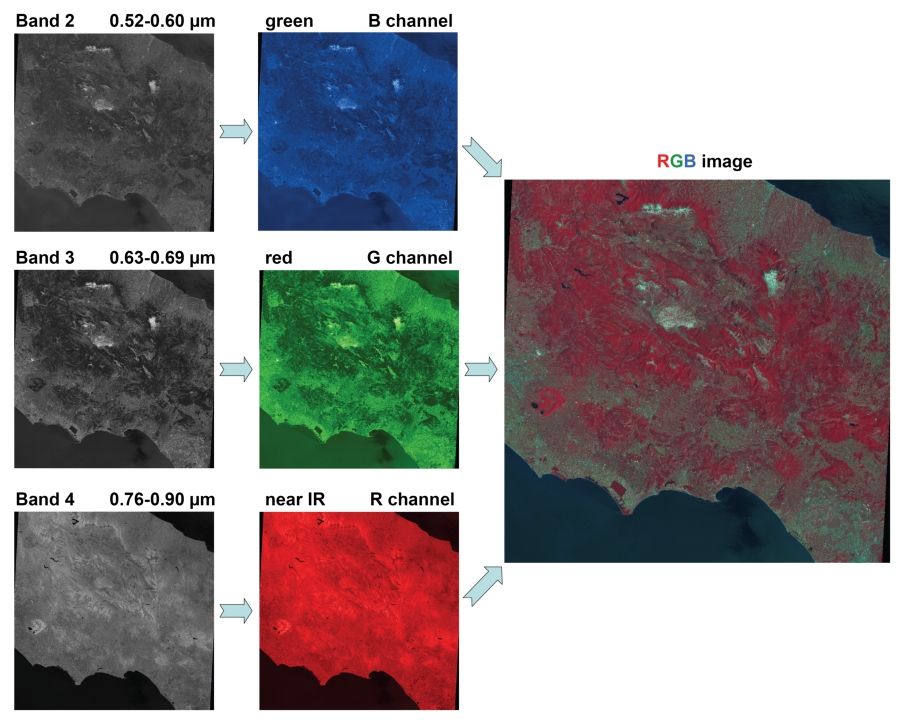1. Light and Radiation
Spectral analysis: Colour glass filters (4/4)
Processing of TM bands for false colour images
Bands 2 (green-yellow), 3 (red) and 4 (near infrared) of the TM image of central Italy and the processes done to obtain a false colour image. Band 2 is interpreted as B channel, band 3 as G channel and band 4 as R channel of an RGB image. Vegetation reflects sunlight strongly in the near infrared, and therefore shows up very bright in band 4. Hence, vegetation is displayed in red colour in the RGB image, which results in a method for classifying vegetation.
Because of the colours given to the used bands in the RGB composite, this type of images is often denoted as NRG imagery (near IR as R channel, red as G channel, green as B channel).

